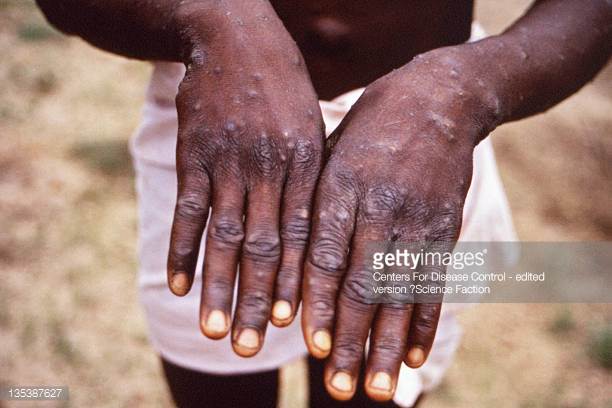
Ayodele Olubuse
Etymology
Monkey pox results from infection by the monkey pox virus, a member of the
genus Orthopoxvirus in the family Poxviridae (subfamily Chordopoxvirinae). Two
clades of monkeypox viruses, the West African and Congo Basin viruses, have been
identified. The Congo Basin viruses are more virulent. Monkeypox virus is closely
related to some other orthopoxviruses such as variola (smallpox) virus, and it cannot
be distinguished from these viruses in some laboratory tests.
Monkeypox should not be confused with benign epidermal monkeypox (BEMP),
a poxviral disease of primates caused by tanapox virus, an antigenically unrelated
virus in the genus Yatapoxvirus of the family Poxviridae.
The virus entered North America in exotic African rodents imported as pets, and spread to
pet prairie dogs, which were highly susceptible to infection. This virus subsequently
infected approximately 70 people who had been in contact with these animals. Prompt
diagnosis of monkey pox is essential, to prevent this disease from becoming established
outside Africa. In addition, it must be distinguished from smallpox, which has been
eradicated from human populations but is a potential bioterrorist weapon.
Monkey pox is a viral disease that resembles smallpox, but unlike smallpox, is
acquired from animals. Monkey pox virus is endemic in western and central Africa,
where it circulates in unknown animal hosts and emerges periodically to affect humans.
The consequences range from asymptomatic infections to severe, fatal illness. This
virus also causes illness in nonhuman primates, and outbreaks have been seen
occasionally in primate facilities, in various parts of the world. The only outbreak of
human monkey pox reported outside Africa occurred in the United States in 2003.
How is monkeypox spread to humans?
The virus can enter through a cut in your skin, or through mucus membranes (eyes, nose, or mouth). You can also breathe it in. Any of the following can increase your risk for monkey pox:
- A bite or scratch from an infected rodent, squirrel, or prairie dog
- Direct contact with skin sores, blood, or body fluids of an infected person or animal
- Direct contact with bedding or other items used by an infected person or animal
- Breathing in air contaminated with the germs after an infected person coughed or sneezed
What are the signs and symptoms of monkey pox?
Fever is usually the first symptom, followed by a rash 2 to 3 days later. The rash is first seen on the middle of the body. The rash later spreads to the arms, legs, and head. Rashes may start as a blister or a raised bump filled with pus. The rash may later get crusty, scab over, and fall off. It is common for lymph nodes to get big and swollen. Lymph nodes in the neck, back of the neck, groin, and armpits may be affected. You may also have any of the following:
- Chills and sweats
- Headaches, backaches, or muscle pains
- Feeling more tired than usual
- Sore throat or cough











0